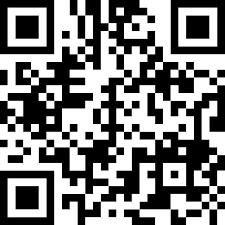Fighting Counterfeits with QR Codes
XI’AN, China – A major Chinese supplier of lubricant packaging equipment has established a subsidiary to help clients battle counterfeiting through the use of QR codes. The step byTom Packaging Machinery reflects the scale of the problem in China’s lube industry.
The company formed the subsidiary a year ago to help customers implement QR codes. Its clients includeShell ,Sinopec andTotal , Tom Packaging President Tang Jianhua explained during an interview at the Mu Cheng You Lubricant Marketing Forum held here on Aug. 17.
China led a list of countries in Asia with the highest value of counterfeited goods in 2016, according to a report by the Global Intellectual Property Center in the United States. This issue continues to raise concerns for international and domestic companies, with several provinces issuing warnings about the proliferation of counterfeit oils on the market.
Consumers can use mobile phones to scan QR codes on packages, checking information such as when and where the oil in a particular container was manufactured and packaged plus logistics such as the dealer who distributed it. Counterfeiters could add fake QR codes to packages, but it would not provide information corresponding to legitimate brands.
The QR system also serves as a supply chain management solution for the company’s clients, Tom Packaging president Tang Jianhua explained. “Our clients can rely on it to monitor the entire supply chain, including tracking each manufacturing process and distribution management,” he added. Manufacturers can also use QR codes for supply chain management purposes.
“Each bottle of lube has its unique QR code attached on the package, telling all the information about the product,” Tang said. “All it takes is to scan the QR code with a smartphone.
“The system is integrated into our newly launched production lines, and [was] received well among our clients. Eventually it will be [in] all Tom [Packaging]’s packaging equipment,” Tang said.
Tom Packaging, which is based in Changzhou, Jiangsu province, claims to be the leading Chinese supplier of chemical packaging equipment and states that it invests roughly 10 percent of its revenue into research and development each year in an effort catch up with foreign rivals, such as the Italian manufacturer OCME, which has a facility in Jiaxing, Zhejiang province.
Tang acknowledged that the company’s precision processing skills lag behind foreign competitors. Part of the problem is that steel manufactured in China is of lower quality, a factor that Tang said he cannot control. Still, the company aims to bring the precision of his company’s equipment on par with international competitors through continuous investment. He also asserted that Tom Packaging performs better in some areas, such as flexibility serving clients in China.
For example, Chinese blenders usually require filling machines to handle different sizes of barrels. It takes time to change barrel sizes for most foreign-branded machines, but Tom Packaging’s machine makes it easy and quick to shift sizes, Tang claimed.
“And of course there is the price. We have the cost advantage,” he said.
“We see great potential in China’s lube market because new packaging equipment is required for newly established blenders as well as the blenders who plan to upgrade facilities,” he said.
Tang believes the lubricant packaging sector is trending toward greater use of computers and less reliance on human operators.
“Labor cost is something we definitely want to avoid in the future. But in the meantime, we demand high efficiency and accuracy,” he said.
Source:https://pubs.lubesngreases.com/lubereport-asia/5
_36/packaging/Fighting-Counterfeits-with-QR-Codes-in-China
-13908-1.html?ET=lubesngreases:e1065:31165a:&st=email

